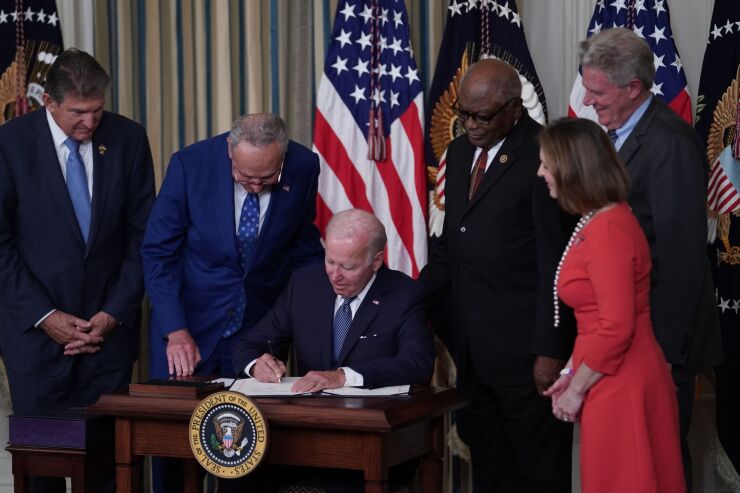Inflation Reduction Act potentially doubles R&D tax credit

The Inflation Reduction Act that President Biden signed into law this week has a lesser known provision that could benefit many small business startups, allowing them to potentially double the amount they can claim on the research and development tax credit from $250,000 to $500,000 per year against payroll taxes.
Under current law small businesses that may not have enough income tax liability to take advantage of their research and development credit can apply up to $250,000 of the credit toward their Social Security payroll tax liability, according to Top 100 Firm Marcum LLP. To qualify for the expanded credit, the small business would need to have less than $5 million of gross receipts and be less than five years old. The Inflation Reduction Act would permit an additional credit of up to $250,000 to be applied against the Medicare payroll tax for tax years starting after Dec. 31, 2022.
The expanded R&D tax credit probably won;t show up on tax returns until 2024 since it can first be claimed for tax year 2023, but it could boost small businesses, particularly the startups that it can incentivize

Sarah Silbiger/Bloomberg
“Just by virtue of having it in this historic bill shows just how significant this credit is viewed by both sides of the aisle. It continues a legacy of support for research and development in the U.S.,” said Chris Winslow, CEO of Clarus R+D, a fintech software company that has helped businesses to claim over $200 million in tax credits. “This particular change is focused on small businesses, which are the cornerstone of innovation and growth in the U.S. This shows a recommitment by the federal government to support those small businesses as they expand their R&D capabilities and investment.”
He expects to see more guidance released on claiming the tax credit to be released by the Internal Revenue Service and the Treasury Department.
“More details will need to be wrapped around this, but it’s essentially raising the cap for small businesses from $250,000 today to be applied to payroll taxes, primarily FICA, to an additional $250,000 that will be allowed against the Medicare hospital insurance coverage,” he said. “Our research shows that only about half the people who are qualified to take the credit actually take the credit. I think the more opportunities to use the credit and the higher limits that people can claim will expand the overall market and and create more opportunity to fund innovation for today’s R&D customers.”
There will be some hurdles as the IRS has been increasing the requirements for documenting R&D activities, but Winslow noted that there have always been some requirements for documentation, which is what his software helps companies do. “Because of the amount of credits, there is an opportunity going forward for additional requirements by the government to demonstrate the research and development activities that qualify for this credit in addition to the calculation of the credit amount,” he said. “This is what we’ve invested in heavily over the last five years is our software platform that creates efficiency for our customers to enter all the appropriate information that demonstrates their qualification under the law, but in addition creates a highly detailed compliant report that supports the requirements that the IRS has for demonstration of research and development activities that qualify.”


